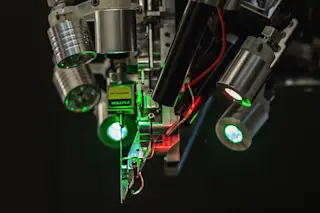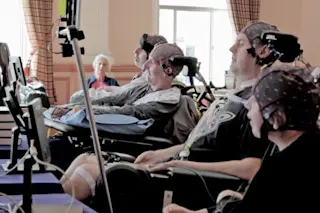Brain-computer interfaces always sound incredibly futuristic. But this one is even wilder than most. In a pair of studies published Thursday, researchers say they’ve linked up multiple brains, of both monkeys and rats, to form an "organic computer." By literally putting their heads together, the networked animals performed simple tasks and computations better than an animal flying solo. The experiment could point toward future brain interfaces between people, allowing learning or collaboration to pass directly from brain to brain.
Telepathy, in a way, has been here for a while. Scientists already demonstrated that we can use brain signals to control mechanical devices like prosthetics or an exoskeleton. We can also transmit signals from one brain to another to control a person’s body movements. However, up to this point, no one had synced a network of brains together in order to accomplish a single task. Now, Duke researchers have, with the ...










